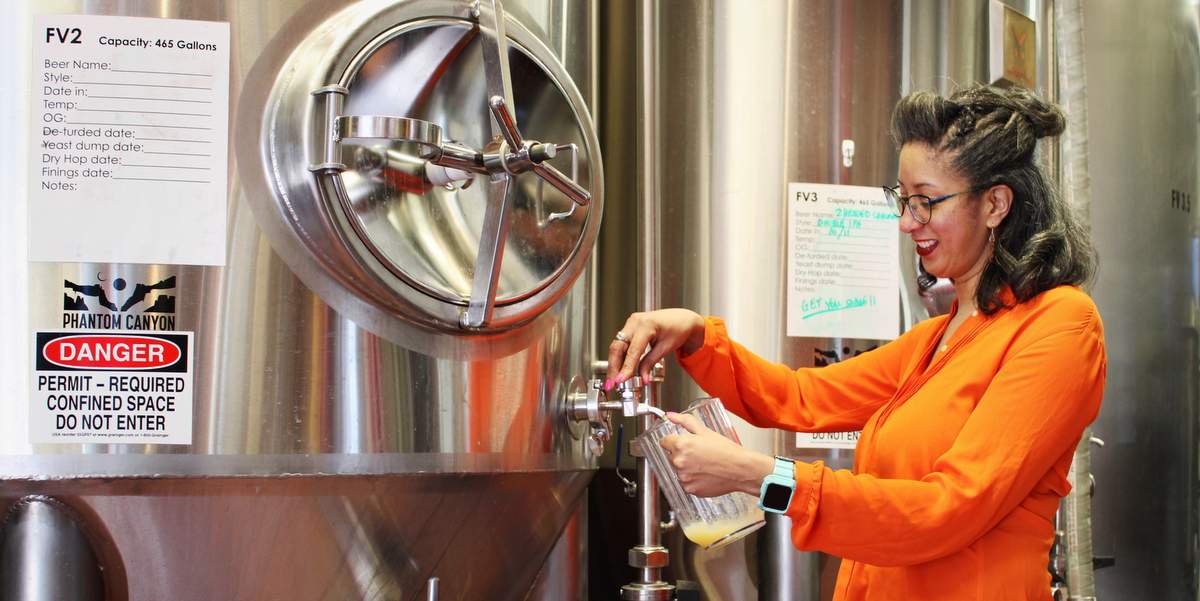
We all know cans are not only hard to find these days, but they are expensive when you find them. Why? Demand. Cans are the preferred format for craft beer packaging but also for every other beverage brand in soda to energy drinks. Availability. That whole Ball Corp debacle (just for starters). Then there’s cost. The raw material cost for aluminum is naturally high, but the commodity itself is spiking in price because, well, all those reasons we just mentioned with an added layer of politics for good measure. Here’s an example of the latter: Nearly four years since the Section 232 tariffs on aluminum took effect (catch up on those right here), the U.S. beverage industry alone has paid more than $1.4 billion in tariffs on cans. But here’s the kicker: That’s not just on foreign aluminum — that’s also upcharges from U.S. and Canadian metal merchants too.
That’s according to research conducted on behalf of the Beer Institute by HARBOR Aluminum. From the press release:
The research conducted on behalf of the Beer Institute by HARBOR Aluminum, an independent authority on the aluminum industry and its markets, found that between the implementation of Section 232 aluminum tariffs on March 23, 2018, and Feb 28, 2022, the U.S. beverage industry paid $1.416 billion in Section 232 tariffs on 7.1 million metric tons of aluminum. Of that amount, only $111 million (8 percent) went to the U.S. Treasury. HARBOR Aluminum estimates U.S. rolling mills, U.S. smelters and Canadian smelters received $1.305 billion (92 percent) of the total by charging end-users — such as U.S. brewers — a tariff-burdened price regardless of whether the metal was meant to be tariffed based on its content or origin.
HARBOR Aluminum also estimated that in 2021 alone, the U.S. beverage industry paid $463 million in Section 232 tariffs. Of that $463 million, only $15 million (3 percent) went to the U.S. Treasury, while $448 million (97 percent) went to U.S. rolling mills, U.S. smelters and Canadian smelters.
Ouch. But hey, if it makes you feel better (it probably won’t) U.S. primary production is way up in 2022. The tariffs are working for those folks. Based on Aluminum Association surveys (check it here), the estimated annual rate of U.S. primary aluminum production totaled 1,000.2 thousand metric tons (kmt) during March 2022 — that’s an increase of 12.9 percent over the March 2021 annual rate of 885.9 kmt. The first three months of 2022 have seen similarly impressive jumps in primary aluminum production (dig this chart). Of course, U.S. primary aluminum production has been brutalized over the last decade, even before the pandemic, and that of course has a lot to do with the penetration of imported aluminum in the American market. But since the tariffs … According to the Economic Policy Institute:
In the two years from the March 2018 implementation of the Section 232 aluminum import measures to the February 2020 pre-COVID-19 economic peak, U.S. production of primary aluminum increased by 37.6% compared with the preceding two-year period. This increase was a result of restarts or production increases at five of the six remaining smelters. Domestic aluminum production reached 1.14 million metric tons at an annualized rate before the COVID-19 economic shock took hold, up from 741,000 metric tons in 2017.
That’s cool for U.S. aluminum, but what’s not cool here is faux tariff costs being passed onto both the U.S. beer maker and soon the American beer consumer.
“With the cost of gas and groceries at record highs, American families and businesses are feeling the strain under the high costs of living. This new research shows the tariffs on aluminum continue to push up prices on American consumers and businesses,” said Jim McGreevy, president and CEO of the Beer Institute. “The fastest way to alleviate these high prices on American businesses and families is to repeal the tariffs.”
One final fun fact. According to the same report: In 2020, brewers bought more than 41 billion aluminum cans and bottles, making aluminum the single largest input cost in American beer manufacturing.






Leave a Reply
You must be logged in to post a comment.